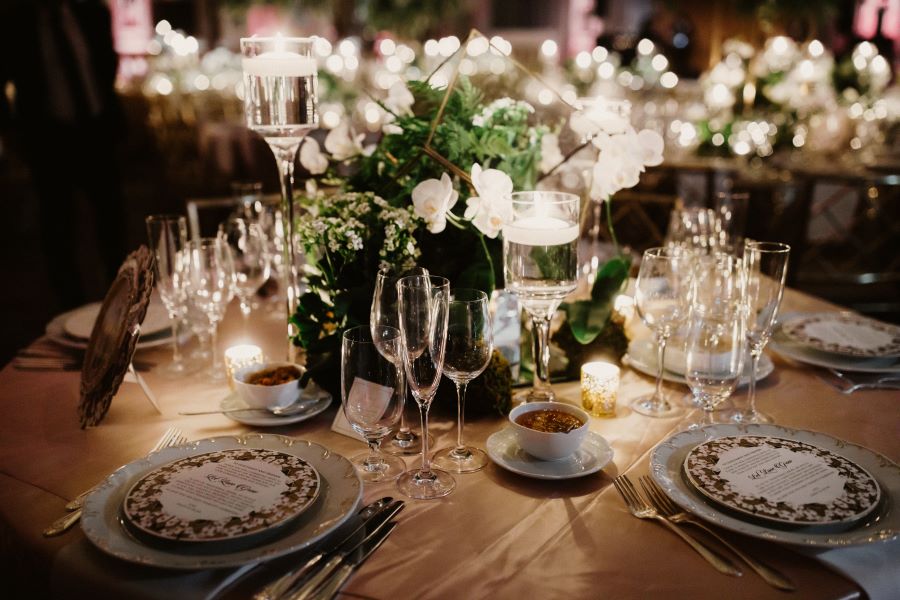
Every country has its own wedding traditions that hold immense significance and serve as a link between past and present. Customs reflect a nation’s identity and values, and Armenian wedding traditions are no exception.
Traditional Armenian weddings celebrated by our ancestors were different from today’s ceremonies. However, some elements have been preserved. The one constant is that a wedding remains a very special moment in any family’s life. Many Armenian families are saving money and resources to have a lavish celebration of a lifetime.
It’s arguably one of the most anticipated events in the life of every Armenian. What do you need to know before attending a wedding in Armenia? If you are invited as a guest, you will see a bunch of beautiful and yet unusual rituals. Our blog will make it easier to understand the stages of Armenian weddings. So, let’s dig in.
Armenian Wedding Traditions of the Past
In ancient Armenian weddings, young people married at an earlier age, with the groom’s parents taking on the responsibility of guardianship. It was ok for the parents to choose a bride for their son. Traditionally, the groom’s father would ask for the bride’s hand only in the evening to avoid embarrassment in case of rejection.
It was customary for the bride’s family to initially decline the proposal, offering a polite excuse to avoid appearing eager to marry off their daughter. This ritual ensured even the most desirable suitors had to demonstrate persistence.
Once they had their consent, the engagement and wedding details were agreed upon. The groom’s family was responsible for all wedding expenses. The celebrations began on the eve of the wedding, with the entire village and relatives gathering at the bride’s home to bake lavash and gata, a traditional Armenian pastry. Only married women participated in this ritual, believed to transfer their happiness to the bride.
By the way, lavash symbolized fertility, and on the wedding day, the mother-in-law would drape it over the newlyweds’ shoulders. She wishes them a fruitful life and offers them honey to ensure a sweet journey together. This tradition has been preserved and you can see it at a modern wedding as well.
Traditional Wedding Dress
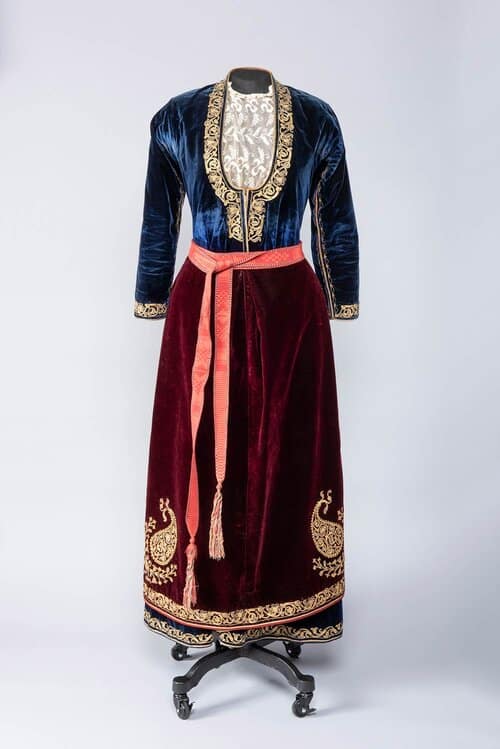
Photos: Armenian Museum of America
During modern weddings, Armenian brides wear white just as in any Western country. However, the looks of the bride and groom were completely different in the past. One of the most significant rituals was the bride’s attire, symbolizing her change in status.
The wedding dress was the bride’s finest garment, worn on special occasions and preserved for future generations. Typically, it was made from red and green cloth, adorned with golden ribbon. The red symbolized fire and passion, while the green in the groom’s attire represented fertility.
These garments signified their status as “king and queen” for the day, made from the best fabrics, and accessorized with gold or silver jewelry, reflecting the family’s social status. The style and design of the dress differed depending on the region.
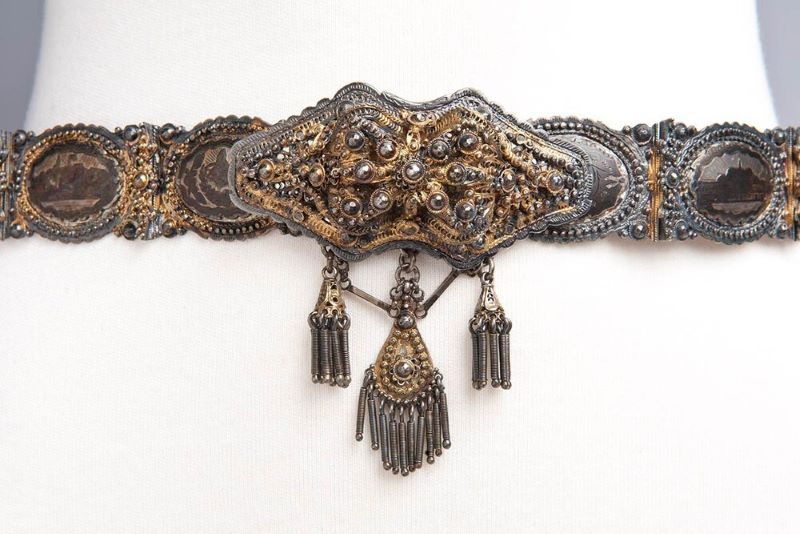
The bride’s ensemble included a red or purple silk belt with a golden thread inscription wishing joy. An apron with protective patterns shielded against the evil eye. The dress’s chest area featured intricate embroidery with patterned white cloth.
The headdress was another focal point, comprising a pearl chain with gold or silver coins. The bride wore ample jewelry.
Traditional Dishes
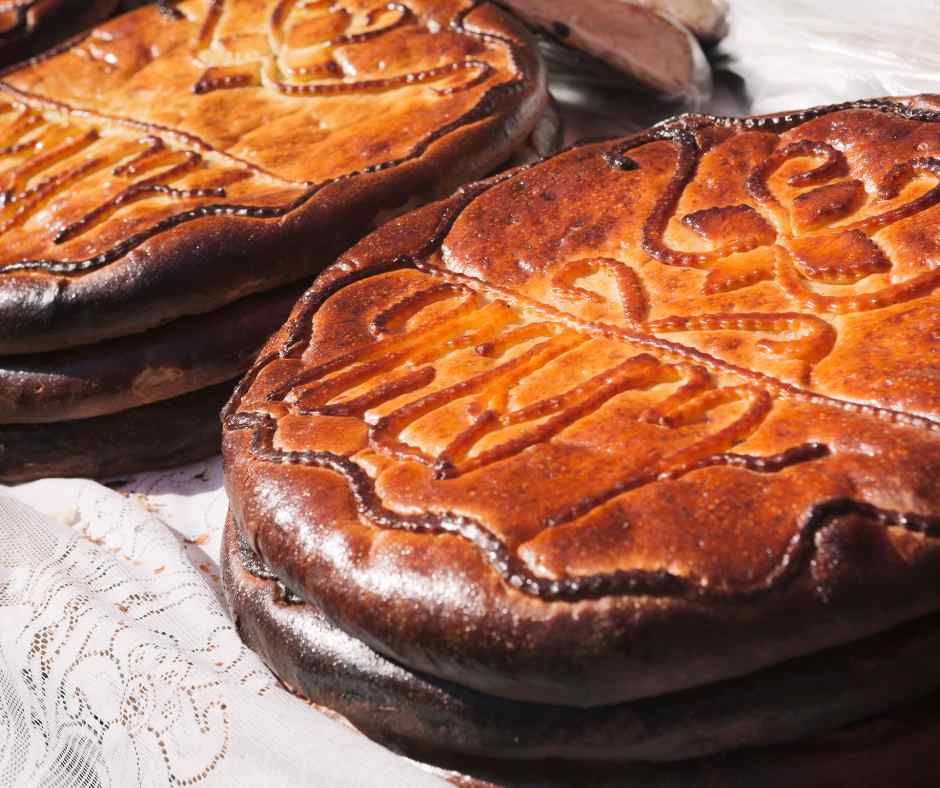
The dishes on a wedding table also varied depending on the region. In Western Armenia, harisa, a porridge with chicken or lamb and wheat, was a staple at weddings. Eastern Armenia favored khashlama and pilaf topped with chicken. Barbecue, a timeless favorite, continues to hold a prominent place at wedding tables.
There were many fruits on the table, and each carried a symbolic meaning. Apples represented women, pears symbolized men, and pomegranates denoted fertility. A crucial ritual involved the bride throwing a pomegranate on the ground—the more seeds that spilled out, the more children she was believed to have.
And, of course, lavash and gata were essential. The same is relevant during modern Armenian weddings. For example, the family of the bride hands over gata as a gift to the groom’s family members when they greet them at the bride’s house before the ceremony.
Modern Armenian Wedding Traditions
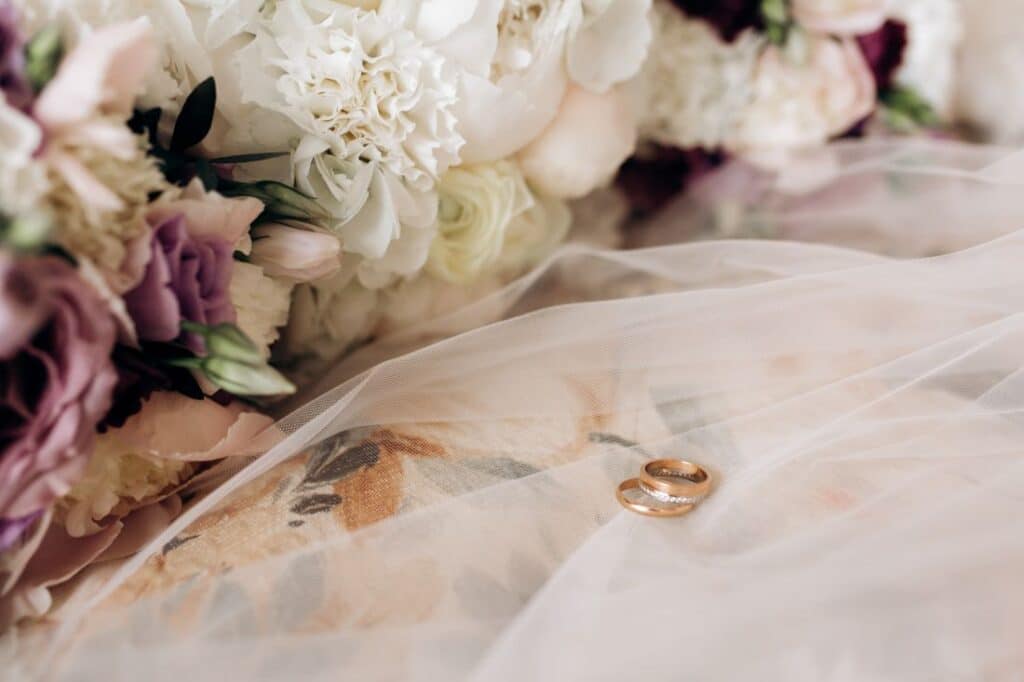
Although much has changed there are some traditions that remain valid. For example, the bride’s parents’ house is always decorated, with tables filled with food and desserts.
The groom’s family presents beautifully wrapped gift boxes to the bride. They include items such as the veil, shoes, chocolate, Armenian cognac, perfume, and flowers. “Qavor”, a godfather, and his wife are the central figures during the wedding. For example, a godmother or “qavor kin” circles the veil on the bride’s head to ensure a fortunate marriage.
In a playful tradition, the groom’s godparents must pay a ransom for the bride, and one of her shoes is often stolen while dressing.
The church ceremony is crucial, often followed by a festive reception. During the church ceremony, the groom and bride wear crowns and share a common cup of wine.
The mother-in-law of the groom welcomes newlyweds with lavash and honey just as in the past.
Before entering the reception hall or the house where they will leave the couple breaks plates for good fortune. Armenian weddings are filled with loud music and dancing. There is usually a bride’s dance. Single guests always get small souvenir boxes or tarosiks.
A popular toast during an Armenian wedding is “May you grow old on one pillow”. There is always a lot of food during the wedding, and traditional Armenian barbeque is always on the table.
If you are traveling to Armenia as a wedding guest or want to organize a celebration here, reach out to Levon Travel to take care of tickets, accommodation, transportation, and other details.
